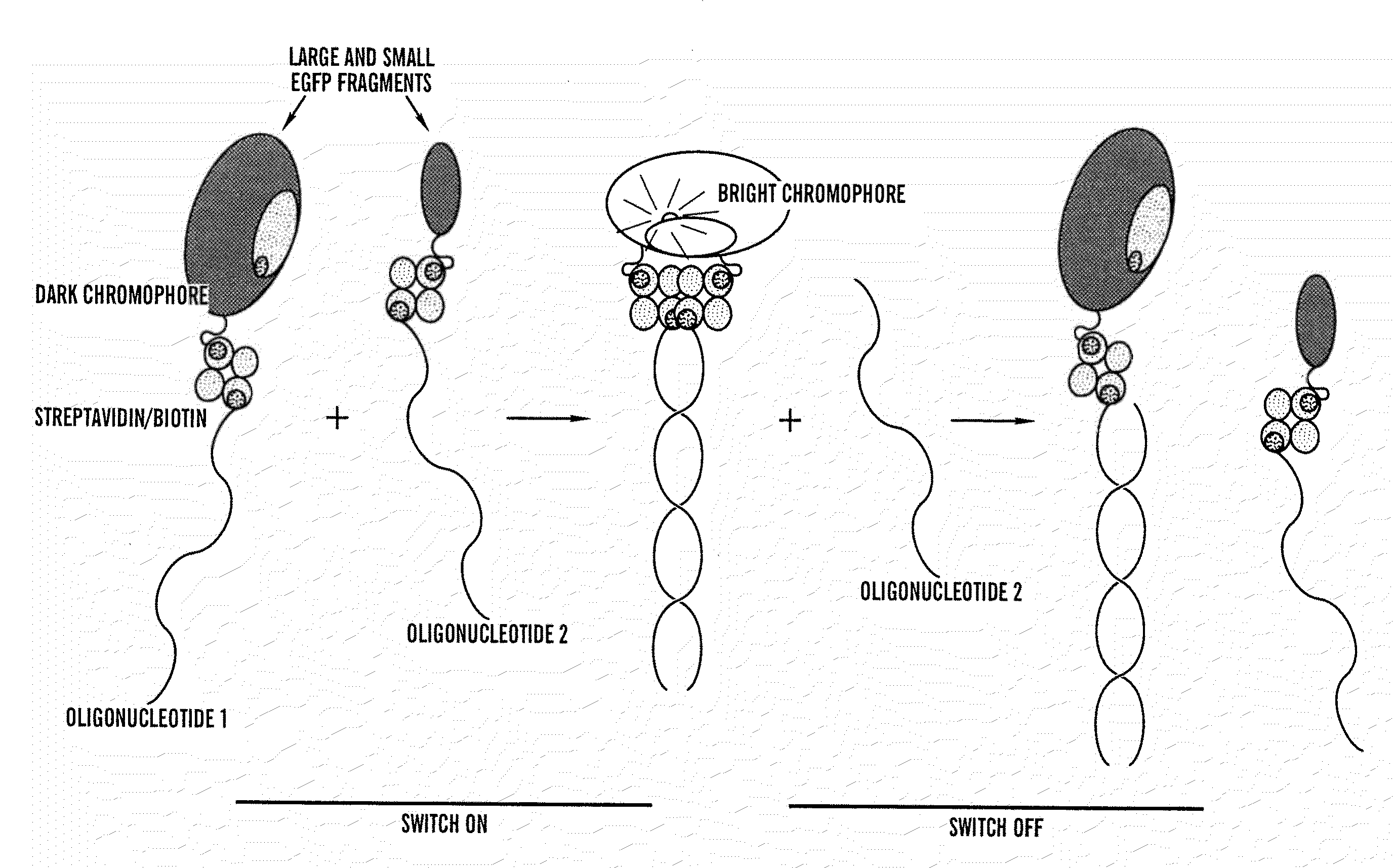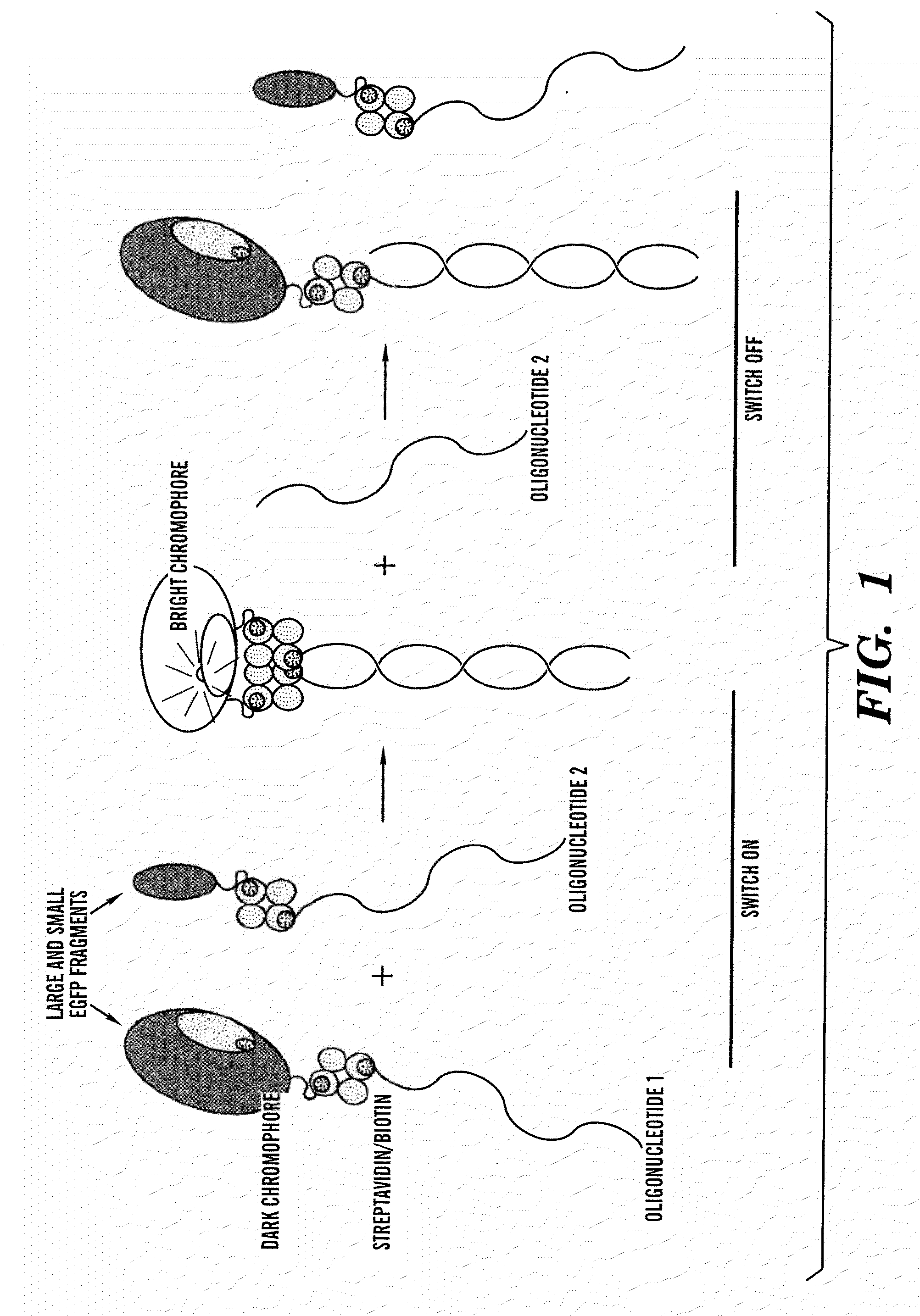Activated split-polypeptides and methods for their production and use
a technology of activated split-polypeptides and active proteins, which is applied in the field of new activated split-polypeptide proteins, can solve the problems of poor folding characteristics, the need to refold, and the power of existing protein tagging and detection platforms, so as to reduce active protein signals and efficiently conduct and record results
- Summary
- Abstract
- Description
- Claims
- Application Information
AI Technical Summary
Benefits of technology
Problems solved by technology
Method used
Image
Examples
example 1
Methods
[0148]Molecular modeling. Modeling of EGFP and its fragments was performed using a string of beads method18. Each amino acid of a polypeptide is represented by two beads corresponding to the Cα and Cβ positions. Neighboring beads are constrained to mimic the backbone geometry and flexibility. The interactions between amino acids are simulated by a Gō-like structure-based potential18. In such a model, two amino acids are assigned an attractive or repulsive potential depending on whether they form a contact in the native protein state or not. The conformation of native EGFP was taken from the Protein Database Bank (X-ray structure; PDB code 1c4f). To choose the contact potential for amino acids in EGFP fragments we used native structures of a full-size protein. Protein folding thermodynamics and kinetics were analyzed by the discrete molecular dynamics (DMD) approach18.
[0149]Cloning, expression and purification of polypeptides. A plasmid containing EGFP-1 gene (Clontech) was us...
PUM
| Property | Measurement | Unit |
|---|---|---|
| Fraction | aaaaa | aaaaa |
| Fluorescence | aaaaa | aaaaa |
| Conformation | aaaaa | aaaaa |
Abstract
Description
Claims
Application Information
 Login to View More
Login to View More - R&D
- Intellectual Property
- Life Sciences
- Materials
- Tech Scout
- Unparalleled Data Quality
- Higher Quality Content
- 60% Fewer Hallucinations
Browse by: Latest US Patents, China's latest patents, Technical Efficacy Thesaurus, Application Domain, Technology Topic, Popular Technical Reports.
© 2025 PatSnap. All rights reserved.Legal|Privacy policy|Modern Slavery Act Transparency Statement|Sitemap|About US| Contact US: help@patsnap.com



